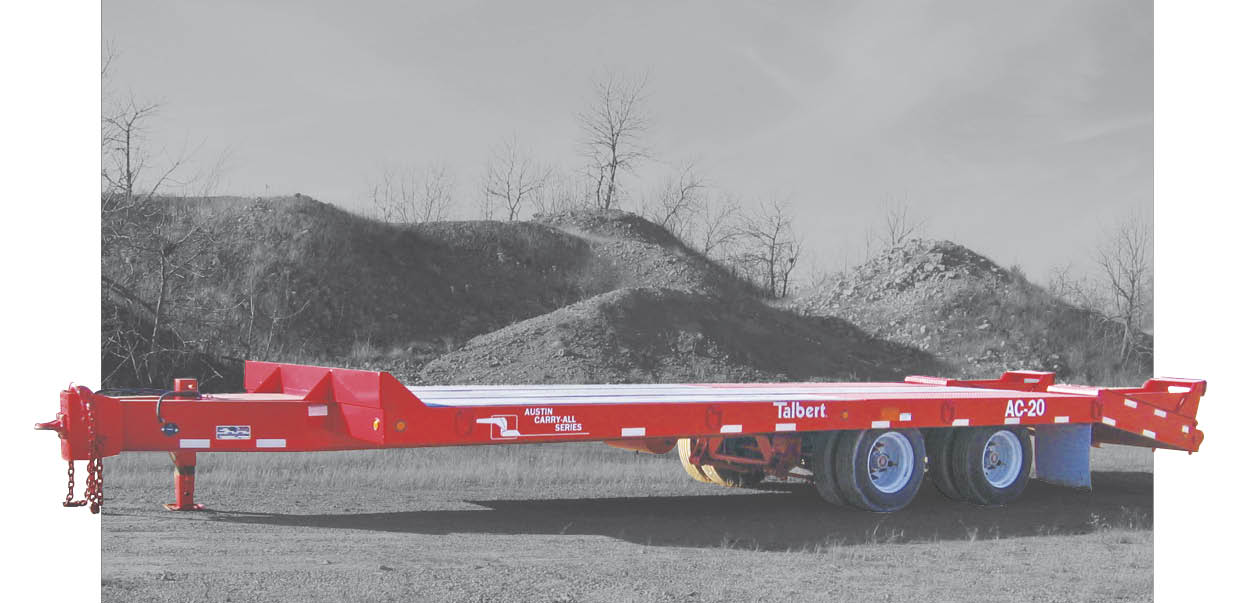
Choosing the right trailer, adhering to safety ratings, and conducting pre-trip inspections are key to ensuring job site safety during equipment transport.
Safety is a top priority on any job site. Moving loads from one site to another comes with a great deal of responsibility. As does loading and offloading equipment. But how can safety be ensured? It all comes down to the load and the road. Here are a few things to consider when using a trailer to haul or unload equipment.
Choose Wisely
A contractor’s first safety consideration should be choosing a trailer that’s built for their operation’s specific load requirements, especially if multiple pieces of equipment are being transported on the same trailer.
A trailer designed to handle the load safely eliminates the risk of structural failure as well as associated accidents and injuries.
To ensure safe operation, it’s best to start with a trailer from a high-quality manufacturer that emphasizes safety and durability from engineering through production.
For contractors looking to move larger-capacity equipment, such as telehandlers and excavators, opting for a 10- 30-ton self-cleaning tag-a-long trailer or wood deck beavertail trailer design with ramps or a lift and deck style is a common choice.
These trailers are capable of carrying multiple pieces of equipment, and the ramps provide easy loading and unloading. It can also handle rough road conditions, like those found in new developments and remote areas, and offer industry-leading safety ratings.
Consider Your Load
Another safety feature to consider when spec’ing a trailer for use on a job site is the trailer’s center of gravity to maintain load integrity and securement with each haul. For example, some trailer manufacturers offer a loaded deck height of 32.25" which is up to 2" lower than other models.
This design provides a lower center of gravity, allowing operators to safely transport their equipment under low clearances and maneuver around tight corners in urban and residential areas.
Don’t Overlook Safety Ratings
It is an unfortunate reality that it only takes one accident to pay for a trailer. A trailer’s safety rating helps paint a more comprehensive picture of load capacity and indicates how much stress a trailer can safely handle.
That stress comes from driving over uneven ground or off the road, hitting chuckholes, bouncing over bumps and crossing railroad tracks. Historically, the magnification of payload weight on a trailer due to road dynamics is a 1.8 to 1 ratio.
It’s important to keep in mind that the 1.8 multiplier is only an average. On any given haul, the stress placed on the trailer can go above that level multiple times.
If no cushion is built into the trailer to handle those spikes in stress, there will be more potential for long-term, progressive structural damage, which can lead to trailer failure off or on the road as well as diminish the life of the trailer. Since there is no universal measure for safety ratings, they vary from manufacturer to manufacturer, from no margin to an industry high of 2.5 to 1, which is considered ample cushion.
Overall, it’s important to take trailer capacity seriously and to be conscious to not overload a trailer. Each time it’s overloaded, the dynamics of the steel change, much like a rubber band.
Eventually, the steel, and therefore the trailer, will break, increasing the risk for damage, accidents, and injuries.
Purchasing the right trailer can be complicated but many manufacturers know capacity from top to bottom and can help contractors select the best trailer for their application.
Conduct a Pre-Trip Inspection
Whether it’s a custom trailer or a standard unit, once it’s matched to the load, a pre-trip inspection is in order and should be done before taking off with each load.
Walk around the trailer and ensure there are no damages or cracks in the unit’s frame. Look for visible damage, such as chafed hydraulic hoses, which could spring a leak and cause the system to fail.
Inspect tie-down equipment, such as chains, binders, and straps, for broken parts and pieces and make sure they are rated appropriately. These ratings can be found on the equipment being hauled. Also, ensure the trailer isn’t leaning or sagging to one side.
Check brakes and confirm the tires are inflated to the recommended psi. Overinflated or underinflated tires won’t have the proper load rating, inhibiting them from carrying the weight like they should, which adds stress to the trailer.
Additionally, traveling with improper tires can cause a blowout when hauling heavy loads. Drivers can find the psi, size, ply, and load rating on the manufacturer’s VIN tag.
These are just some of the things to look for to ensure safe travels while hauling equipment. There is a wide range of resources available that offer more information.
For a detailed list of inspection requirements refer to the Federal Motor Carrier Safety Administration’s part 396 webpage and the Driver-Vehicle Inspection Report.
The Motor Carrier Safety Compliance also outlines pre-trip inspection guidelines as does FleetClean USA.
On the Road
From hard hats to load concentration, safety doesn’t stop at the job site. To ensure a successful project every time, you must also consider the load, the road, and everything in between.
Talbert Manufacturing has been building world-class heavy-haul and specialized trailers to rigorous customer specifications since 1938.
The company offers complete lines of heavy haul trailers and specialized transportation equipment for the commercial, industrial, military and government sectors.
Its trailers and equipment are used in applications as diverse as renewable energy, aerospace, heavy construction, in-plant material handling, manufacturing and processing systems, and much more.